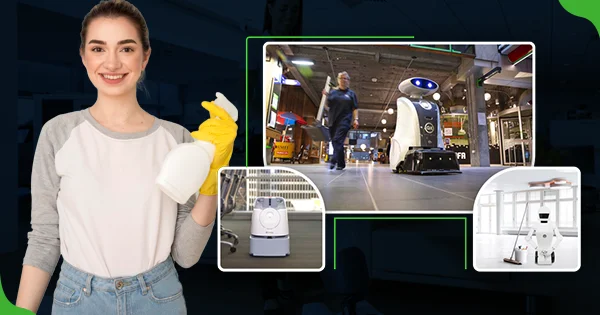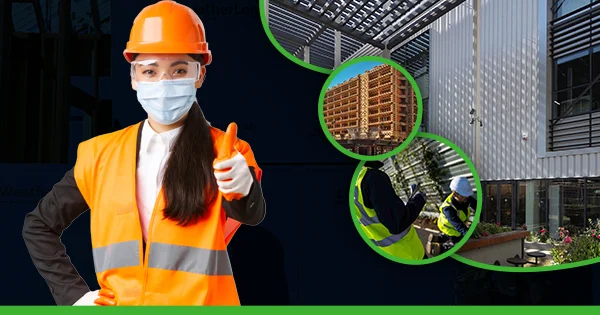The world is facing a growing waste problem that is having a significant impact on the environment. As populations continue to grow and consumption rates increase, the amount of waste generated is reaching unprecedented levels. This waste not only takes up valuable space in landfills but also contributes to pollution and greenhouse gas emissions. To mitigate these negative effects, we must adopt sustainable waste management practices. Sustainable waste management involves reducing, reusing, recycling, and composting waste materials to minimise their impact on the environment. By implementing these practices, we can conserve resources, reduce pollution, and promote a circular economy. Individuals, businesses, and governments must all play a role in addressing the global waste problem and finding sustainable solutions.
The Role of Facilities in Promoting Recycling and Composting
Facilities, such as offices, schools, and manufacturing plants, can play a crucial role in promoting recycling and composting. By providing the necessary infrastructure and resources, facilities can make it easier for individuals to recycle their waste and compost organic materials. This not only reduces the amount of waste sent to landfills but also conserves valuable resources.
Recycling and composting offer numerous benefits for both facilities and the environment. Recycling reduces the need for raw materials extraction and manufacturing processes, which helps conserve natural resources and reduce energy consumption. Composting organic waste allows to produce nutrient-rich soil amendments that can be used in landscaping or agriculture. By implementing recycling and composting programmes, facilities can reduce their environmental footprint and contribute to a more sustainable future.
Advancements in Waste Management Technologies: The Key to a Greener Future
Advancements in waste management technologies are playing a crucial role in achieving a greener future. Waste-to-energy facilities, for example, convert non-recyclable waste into renewable energy through processes such as incineration or anaerobic digestion. These facilities not only reduce the amount of waste sent to landfills but also generate clean energy that can be used to power homes and businesses.
Another important advancement in waste management is the development of advanced sorting systems. These systems use technologies such as artificial intelligence and robotics to automate the sorting process, improving efficiency and accuracy. By separating different types of waste materials, these systems make it easier to recycle and compost, reducing contamination and increasing the quality of recycled materials.
Composting: Harnessing the Power of Organic Waste for a Circular Economy
Composting is a natural process that converts organic waste into nutrient-rich soil amendments. By composting organic materials such as food scraps, yard waste, and paper products, facilities can divert a significant amount of waste from landfills while also producing a valuable resource.
Implementing a composting programme in a facility involves providing designated compost bins for organic waste, educating employees on what can be composted, and ensuring proper management of the composting process. The resulting compost can be used in landscaping, gardening, or agriculture, providing a sustainable alternative to chemical fertilisers.
Composting offers numerous benefits for the environment. It reduces the production of methane, a potent greenhouse gas, in landfills. It also improves soil health and fertility, reduces the need for chemical fertilisers, and promotes biodiversity. By harnessing the power of organic waste through composting, facilities can contribute to a circular economy and reduce their environmental impact.
The Benefits of Waste-to-Energy Facilities: Turning Trash into Renewable Energy
Waste-to-energy facilities are an innovative solution to the waste problem. These facilities convert non-recyclable waste into renewable energy through processes such as incineration or anaerobic digestion. This not only reduces the amount of waste sent to landfills but also generates clean energy that can be used to power homes and businesses.
One of the main advantages of waste-to-energy facilities is their ability to reduce landfill waste. By diverting waste from landfills, these facilities help conserve valuable land space and reduce pollution caused by landfill emissions. Additionally, waste-to-energy facilities generate renewable energy that can replace fossil fuels, reducing greenhouse gas emissions and dependence on non-renewable resources.
Implementing waste-to-energy projects does come with challenges, such as ensuring proper waste segregation to avoid contamination and addressing concerns about air emissions. However, with proper planning and technological advancements, these challenges can be overcome. Waste-to-energy facilities offer a promising solution for turning trash into renewable energy and moving towards a more sustainable future.
The Importance of Education and Awareness: Engaging Employees and the Community
Education and awareness play a crucial role in promoting sustainable waste management practices. By educating employees and the local community about the importance of recycling, composting, and other sustainable practices, facilities can encourage behaviour change and increase participation in waste reduction efforts.
One strategy for engaging employees is to provide training on proper recycling and composting practices. This can include information on what can and cannot be recycled, how to properly sort waste, and the benefits of recycling and composting. Regular communication through newsletters, posters, and emails can also help reinforce the importance of waste reduction.
Engaging with the local community is equally important. Facilities can organise educational events, workshops, or tours to raise awareness about sustainable waste management practices. Collaborating with local schools, community organisations, and recycling initiatives can also help spread the message and encourage participation in recycling programmes.
The Role of Government Policies and Regulations in Driving Sustainable Waste Management
Government policies and regulations play a crucial role in driving sustainable waste management practices. By implementing laws and regulations that promote recycling, composting, and waste reduction, governments can create a supportive environment for sustainable waste management initiatives.
One example of successful government initiatives is the implementation of extended producer responsibility (EPR) programmes. These programmes require manufacturers to take responsibility for the entire lifecycle of their products, including their disposal. By holding manufacturers accountable for the environmental impact of their products, EPR programmes encourage the development of more sustainable packaging and waste management practices.
Government policies can also provide financial incentives for businesses to adopt sustainable waste management practices. This can include tax credits or grants for implementing recycling or composting programmes, as well as subsidies for investing in waste-to-energy facilities or advanced sorting systems.
Innovations in Waste Sorting and Processing: From AI to Robotics
Innovations in waste sorting and processing technologies are revolutionising the waste management industry. Artificial intelligence (AI) and robotics are being used to automate the sorting process, improving efficiency and accuracy. AI-powered sorting systems use machine learning algorithms to identify different types of materials based on their visual characteristics. These systems can quickly and accurately sort materials such as paper, plastic, glass, and metal, reducing contamination and increasing the quality of recycled materials.
Robotic systems are also being used to automate various processes in waste management, such as picking and sorting. Robots can perform repetitive tasks with precision and speed, reducing the need for manual labour and improving overall efficiency. These technologies not only improve the efficiency of waste sorting and processing but also reduce the risk of human error. By implementing AI and robotics in waste management, facilities can achieve higher recycling rates and contribute to a more sustainable future.
Collaborative Efforts: How Facilities Can Partner with Local Communities and Recycling Initiatives?
Collaboration between facilities, local communities, and recycling initiatives is essential for achieving sustainable waste management goals. By working together, these stakeholders can share resources, knowledge, and best practices to maximise the impact of their efforts. Facilities can partner with local communities by providing resources and infrastructure for recycling programmes. This could include providing recycling bins in public spaces or offering recycling services to neighbouring businesses or households. By collaborating with local communities, facilities can increase recycling rates and reduce contamination.
Collaboration with recycling initiatives is also important. Facilities can support local recycling initiatives by purchasing products made from recycled materials or by donating recyclable materials to these initiatives. By supporting the demand for recycled products, facilities can help create a market for recycled materials and promote a circular economy.
In conclusion, sustainable waste management is crucial for addressing the global waste problem and mitigating its environmental impact. Facilities play a crucial role in promoting recycling and composting by providing the necessary infrastructure and resources. Advancements in waste management technologies, such as waste-to-energy facilities and advanced sorting systems, are key to achieving a greener future. Implementing effective recycling programmes requires careful planning, employee engagement, and education. Composting offers numerous benefits for the environment and can be implemented in facilities to harness the power of organic waste. Waste-to-energy facilities turn trash into renewable energy, reducing landfill waste and generating clean energy. Education and awareness are important for engaging employees and the local community in waste reduction efforts. Government policies and regulations can drive sustainable waste management practices by promoting recycling, composting, and waste reduction. Innovations in waste sorting and processing technologies, such as AI and robotics, improve efficiency and accuracy.










